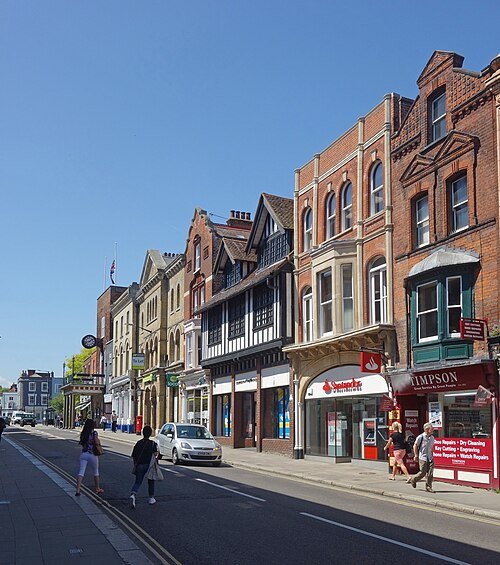Town of Maldon

High Street, Maldon by Jim Osley CC BY-SA 2.0
The town of Maldon is located in the district of Maldon in Essex on the southern east coast of the UK. The town lies on the Blackwater estuary and has had strong maritime ties throughout its history. In the past it has been voted one of the top five market towns in the country.
It is thought that Maldon was established by Saxon settlers in the 5th century. Due to its position on the estuary it became an important port even at this early point and became one of the earliest towns to be recorded in the county of Essex as a whole. The town’s history in its early days was fairly turbulent and it was subject to various Viking raids until the Battle of Maldon in the 990s when the locals were defeated.
By the late 1000s the town had a mint and was allowed to be self-governing by the king on the basis that it gave him a warhorse and a warship. The maritime trade of the town encouraged local tradesmen to set up guilds which flourished until the Puritans took over at which point many of their entertainment and leisure activities were curtailed.
In the 1100s Henry II gave Maldon a Royal Charter which allowed the king to use the town’s port for his own trading purposes. You can see a copy of this charter in the Moot Hall in the town. Maldon is also the home to the famous Plume Library which was established by Thomas Plume in the 17th century. His aim was to house his collection of thousands of books for which purpose St Peter’s Church was converted.
In the 1840s Maldon opened its first railway line via a branch line service to Witham. Later the town would also get a second rail line which linked it to Woodham Ferrers although both lines are now closed and Maldon no longer has its own station.
During the years Maldon became home to the famous Maldon barges which ferried agricultural goods along the east coast of England, particularly to and from London. At their peak it is thought that there were over 5,000 barges working from Maldon although now only a few remain most of which are used for tourist or charter purposes. They can still be seen on the town’s Hythe Quay.
